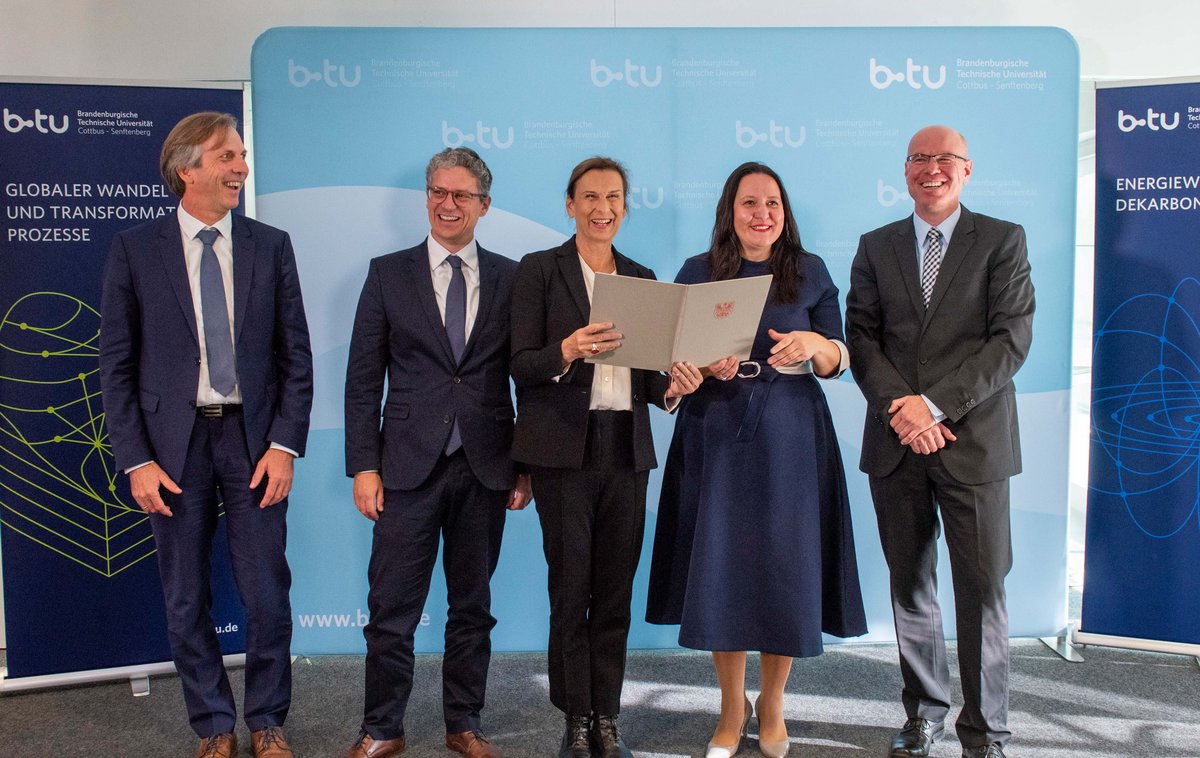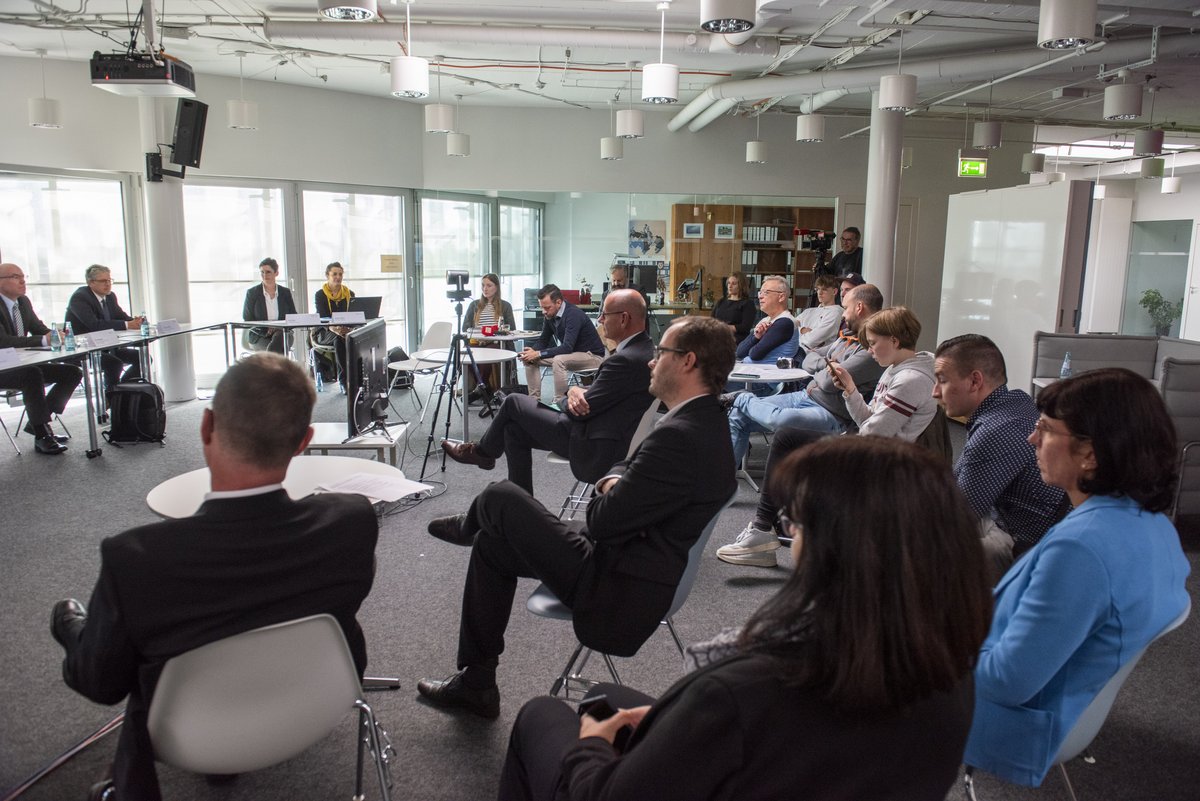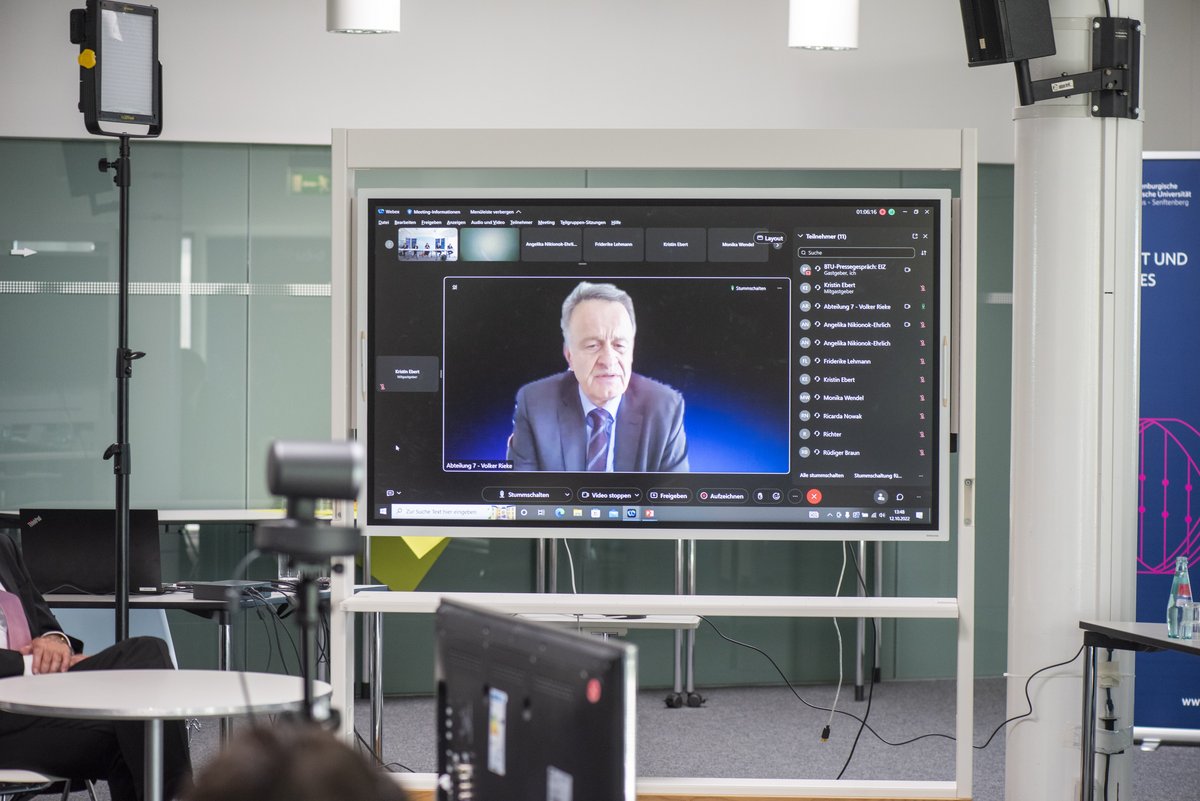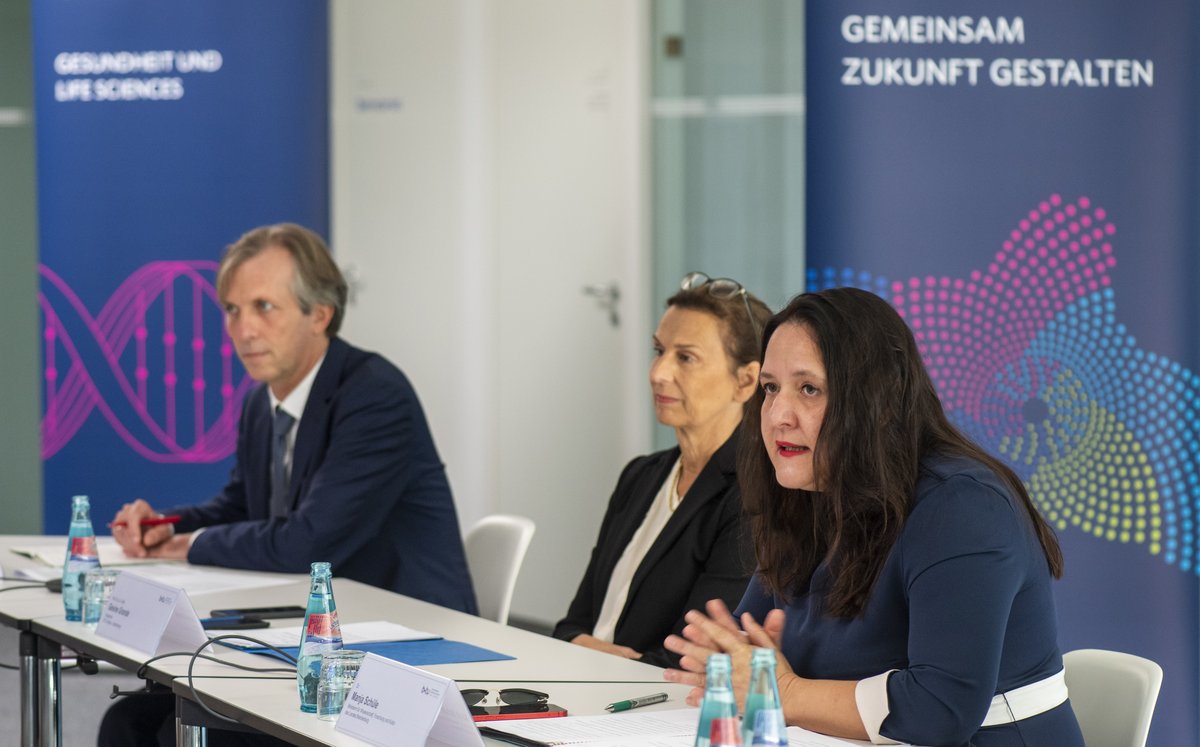102 million euros for the future energy model region of Lusatia
Cottbus is currently developing into one of the most dynamic energy research locations in Germany. This is because the German government has set itself an ambitious goal with the energy turnaround, the achievement of which will require fundamental changes to our energy supply systems. One challenge in particular for Lusatia as a traditional center of lignite mining and lignite-based power generation is that it must reposition itself. This is why scientists from the Brandenburg University of Technology Cottbus-Senftenberg (BTU) and an interdisciplinary partner network are developing innovative technologies for a climate-neutral energy supply in a new research cluster. The Energy Innovation Center (EIZ) at the BTU, which is funded by the German Federal Ministry of Education and Research (BMBF), aims to provide global impetus: The partners see the key to the global transformation of the energy sector in the targeted networking of the various energy systems and sectors as well as the various system actors.
Federal Research Minister Stark-Watzinger explains: "With the new Energy Innovation Center, we are actively shaping the structural transformation of the Lusatian mining region into a sustainable energy region. 14 departments and chairs of the BTU are working together with more than 40 partners from industry and science on technologies and solutions for a climate-neutral energy supply, which are by no means limited to Lusatia. The energy crisis shows how great the challenges we face are. The German Federal Ministry of Education and Research is funding the Energy Innovation Center with a total of 84 million euros over ten years. These funds will be used to create more than 70 new positions for scientists. Our goal here is not only innovations, but also promising jobs and sustainable value creation in the region."
On the occasion of the award of the grant, Brandenburg's Minister of Research Dr. Manja Schüle said, "The energy transition in Germany is leading us away from nuclear and fossil fuels towards a sustainable, environmentally friendly energy supply. Trend-setting ideas and practical answers come - of course - from Brandenburg, from Lusatia, more precisely from the BTU Cottbus-Senftenberg with the new Energy Innovation Center. I am convinced that thanks to the close cooperation of the EIZ with numerous non-university research institutions, Cottbus will establish itself as a supraregional center for energy research. I am pleased that up to 102 million euros will be provided by the state and federal governments for the development of the Cottbus Energy Innovation Center over the next ten years, and that I am able to hand over the funding notification from the ILB today in the amount of 18.5 million euros. The EIZ is not only a centerpiece of the Lusatian Science Park - with the EIZ, the Lusatian coalfield will become an energy region of the future!"
The Lusatian Representative of the Minister President, Dr. Klaus Freytag, emphasized, "The EIZ is a perfect fit for Lusatia and for our Lusatian Program 2038: It is an important building block of structural development. The EIZ links science and business, strengthens innovative power and competitiveness, and does so beyond the borders of Lusatia. The global transformation of energy systems is being shaped in and from Lusatia. Also thanks to the research and developments in the EIZ and at the BTU in the fields of renewable and digital energy systems, Lusatia will remain an important energy region."
Prof. Dr. Mario Ragwitz, Institute Director of Fraunhofer IEG, says: "Achieving a climate-neutral energy supply and industrial production requires great efforts for companies and implies high research needs in the field of sector coupling technologies and integrated infrastructures. Together with the BTU, Fraunhofer IEG is developing application-oriented solutions in the field of integrated planning and automated operation of sector-coupled energy infrastructures within the framework of the EIZ with the aim of making the energy system more flexible."
"We want the energy sector to remain a mainstay of Lusatia's economic and technological identity, even in the age of renewable energies and digitalization," says BTU President Prof. Dr. Gesine Grande. "A comprehensive transformation of Lusatia into a model region for structural change that sets international standards can only be successful through the bundling of many years of experience and scientific expertise in the region. The BTU has the expertise to play a leading role in shaping this process in its profile line 'energy transition and decarbonization'."
The Energy Innovation Center (EIZ) combines competencies and joins other energy research projects at BTU Cottbus-Senftenberg, such as "DecarbLau - Decarbonization of a Lignite Region" or "TransHyDE - System Analysis on Transport Solutions for Green Hydrogen". There will also be a close exchange with the Competence Center Climate Protection in Energy-Intensive Industries (KEI) and the PtX Lab Lausitz - Practical Laboratory for Fuel and Basic Materials from Green Hydrogen. They will all be part of the Lausitz Science Park, the technology and innovation park under construction near the BTU central campus. Institutes of the German Aerospace Center, the Fraunhofer-Gesellschaft and the Leibniz Association, as well as the Cottbus Center for Hybrid Electric Systems (chesco), will also be located here. Together with the city and state, the BTU wants to bring together excellent basic research and applied research with innovative spin-offs and numerous company settlements in the Lausitz Science Park. This fits in with the EIZ.
"In the Energy Innovation Center, we bundle our know-how and, together with our partners, develop innovative technologies as well as economic, political and social perspectives for sustainable energy supply," explains Prof. Dr. Felix Müsgens from the BTU Department of Energy Management, who initiated the EIZ together with Prof. Dr.-Ing. Johannes Schiffer, Department of Control Systems and Network Control Technology. He adds: "The needs range from intelligent control and operational management strategies for plants and grids to the storage and use of electricity surpluses. We also want to further advance regional innovation and start-up expertise in the areas of sector coupling and digitalization."
The German Federal Ministry of Education and Research is funding the EIZ with up to 84 million euros over a ten-year period. These funds will be used to create over 70 new positions for scientists* conducting research on the energy transition. In addition to the funding from the German Federal Ministry of Education and Research, the new type of laboratory infrastructure will be funded by the Investitions- und Landesbank (ILB) to the tune of a further 18.5 million euros. Over a period of ten years, the further development of the EIZ into a powerful and innovative network is to be financed with up to a total of 102 million euros. The funding is provided through the Brandenburg State Chancellery's Structural Development Lusatia funding guideline. The funds come from the federal government's Structural Strengthening Act.
About the Energy Innovation Center
The Energy Innovation Center focuses on targeted innovations, industry-oriented, product-oriented technology development and transfer, as well as education and training opportunities for business and science. The focus is on technical as well as economic, political and social issues of the energy transition with special reference to structural development. The center is intended to serve as a platform for transferring the approaches and technologies developed to other regions and to the European level. The EIZ consists of six networked institutions with their own thematic focuses, four of which will form a campus-wide large-scale energy technology laboratory. With 14 departments and chairs of the BTU Cottbus-Senftenberg as well as with more than 40 additional partners from industry and science, the EIZ is optimally positioned for interdisciplinary research. Partners include 50Hertz Transmission GmbH, Ingenieurgesellschaft für Energie- und Kraftwerkstechnik mbH (IEK) and the Fraunhofer Institute for Energy Infrastructures and Geothermal Energy IEG.
Contacts:
Prof. Dr. Felix Müsgens
Department of Energy Economics
T +49 (0) 355 69 4504
E felix.muesgens(at)b-tu.de
www.b-tu.de/fg-energiewirtschaft
Prof. Dr.-Ing. Johannes Schiffer
Department of Control Systems and Network Control Technology
+49 (0)355 69-2809
E schiffer@b-tu.de
www.b-tu.de/fg-regelungssysteme
Press contacts:
Stephan Breiding
Press Officer Ministry of Science, Research and Culture of the State of Brandenburg (MWFK)
T +49 331 866 4566
E stephan.breiding(at)mwfk.brandenburg.de
www.brandenburg.de
Ilka Seer Brandenburg University of Technology Cottbus-Senftenberg
Press Officer / Head of Corporate Identity
T +49 (0)355 69 3612
E ilka.seer(at)b-tu.de
www.b-tu.de




